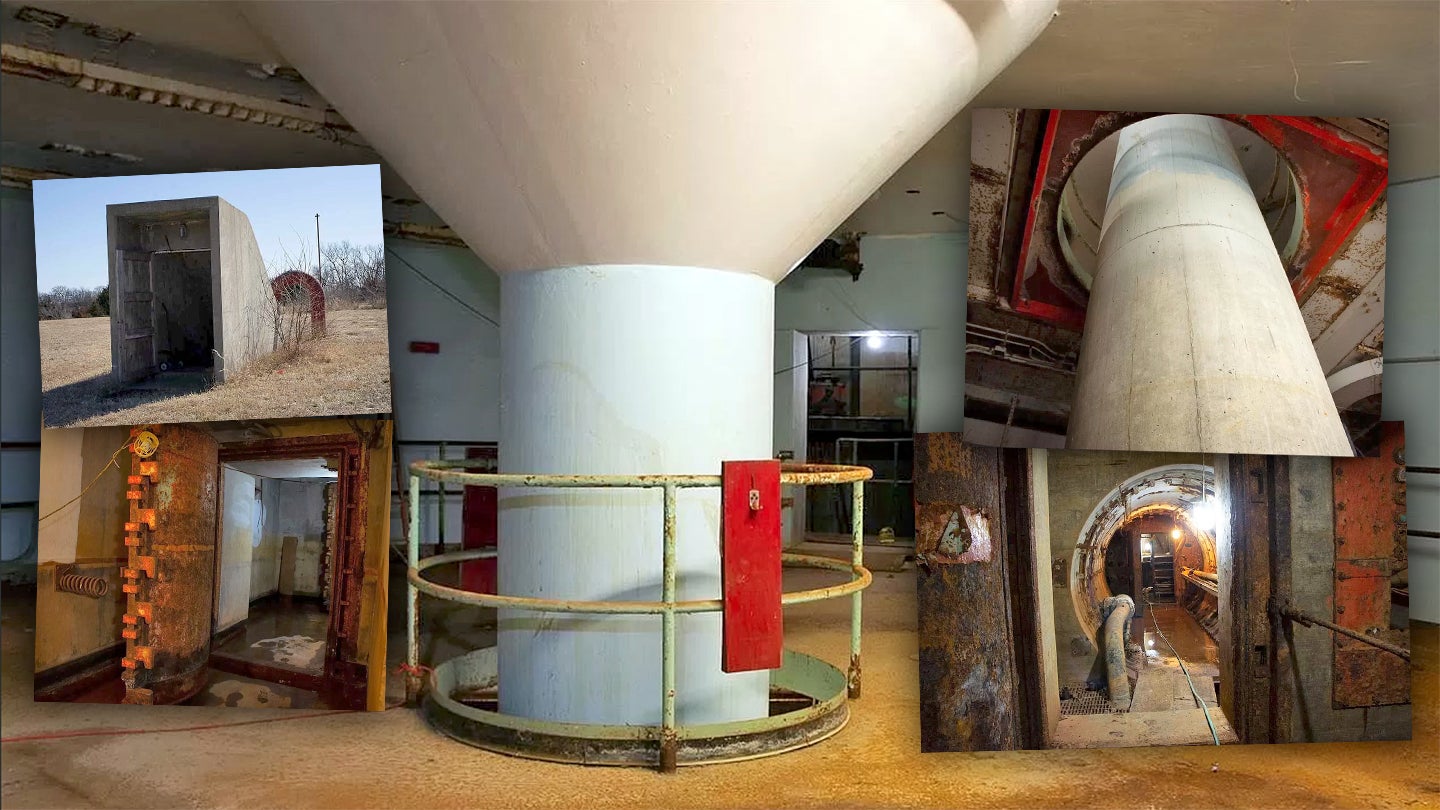A decommissioned Atlas F intercontinental ballistic missile silo has gone up for sale in Abilene, Kansas complete with its launch and control room and exterior support buildings. While the site no longer contains a nuclear-armed weapon, it does offer a large amount of square footage and is hardened against nuclear attacks, perfect for a doomsday prepper with deep pockets who wants to ride things out in relative comfort.
The site, known officially as 550th SMS Site 2, was constructed in 1961 and decommissioned on June 25, 1965. The silo complex was listed for sale on a variety of real estate brokerage sites last week, but it’s unknown what became of the site in between decommissioning and being listed for sale. According to its listing on Relator.com, the bunker was purchased by a Manhattan-based owner on January 25, 2022, and relisted the next day for the price of $380,000.

The decommissioned 550th SMS Site 2 facility was built in 1960 and sits on 11 acres of grassy Kansas plains. According to the full description on Zillow.com, the underground facility was hardened against nuclear blasts and includes its own water and electrical systems, as well as a forced sewage system that brings waste to the surface.


The main bunker, which sits some 170 feet below the ground, was designed as the launch control center and living quarters for the former 550th SMS crew stationed there. The control center is connected to a single missile silo by a concrete tunnel.

In addition to being constructed to withstand attacks by enemy missiles, the site would need to be able to withstand the tornadoes that are frequent throughout Kansas. For those reasons, the entire facility was constructed of concrete hardened with epoxy resin and 600 tons of steel rebar, enabling it to withstand the equivalent of 500 mph winds and making it “one of the strongest structures ever built by man,” according to AtlasMissileSilo.com.

While the Atlas F ICBM that was once stored at 550th SMS Site 2 is long gone, there appears to be some kind of missile-shaped concrete structure where the missile once stood. There is no mention of the structure in the site’s real estate listing.


The complex also includes a 4,000-square-foot Quonset building that has its own water, sewage, and electrical system, and a separate “one-room building for office or storage.” According to the listing, the unique facility offers great security and “has lots of potential in whatever way you choose to go.”


The video below offers a tour of another nearby facility, 550th SMS Site 4 in Carlton, Kansas.

Site 2 was operated by the 550th Strategic Missile Squadron (SMS) at Schilling Air Force Base. The 550th was established in 1961 to oversee twelve SM-65F Atlas, or Atlas F, intercontinental ballistic missile silos spread out throughout central Kansas. A total of 72 of these Atlas F sites were constructed nationwide, with six strategic missile squadrons established to operate them.

A five-man crew would be stationed in the underground bunkers, consisting of an electrical power production technician, a missile maintenance technician, a missile facilities technician, a missile combat crew commander, and a deputy missile combat crew commander. Above ground, additional support personnel could be stationed inside Quonset huts.

The 550th SMS became operational in 1962 and was deactivated in 1965 following the Atlas missile’s retirement from service after the development of the LGM-30 Minuteman missile rendered it obsolete. Despite being phased out, Atlas variants continued to be vital for providing data that would inform the development of later missiles, and versions would go on to be used for space launches until 1981.

The Atlas F missile silos featured a vertical silo in which a single missile would be stored, but not fired. When placed on alert, the missiles would be fueled with liquid kerosene. Prior to launch, the missile would be loaded with liquid oxygen and raised to the surface by an elevator system where it could then be launched.
In total, it took around 10 minutes for the Atlas F to be fueled, raised to the surface, and launched. Its adjacent launch control room was built on springs that were capable of absorbing the quake of a nearby nuclear detonation.

It’s not all that uncommon for such hardened former military facilities to go on sale. For instance, another decommissioned Atlas F site went on sale in 2017. Here’s another Atlas missile silo that has been converted into a private residence. A Nike missile site in Pennsylvania was converted into a brewery in 2019, and just last year, an EMP-hardened Cold War-era communications bunker was listed for sale in Kansas. These sites were designed to withstand some of the harshest conditions imaginable, so it makes sense that they could be sought-after by the right buyer looking for a nearly impenetrable bug-out bunker.


That being said, these sites have often become money traps for owners that were unprepared for the realities of renovating and sustaining such an elaborate facility that, in many cases, has not received attention for decades. So, while the barrier to entry is comically low at just $380,000, you could probably add up to another zero onto that figure to make it truly the ultimate survivor’s palace that it could be.
Contact the author: Brett@TheDrive.com
